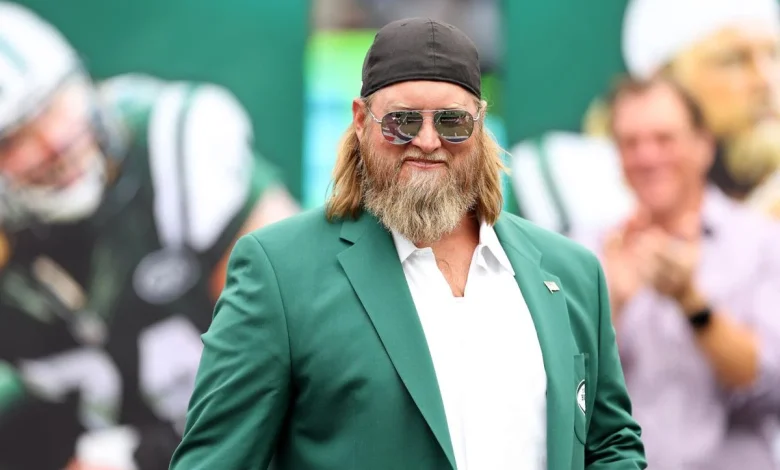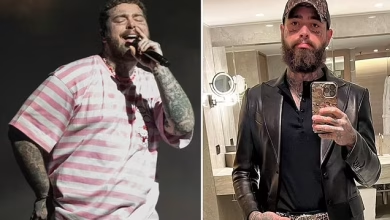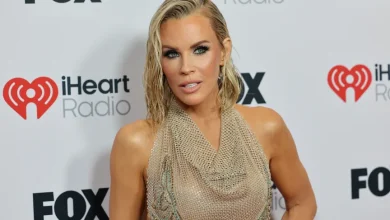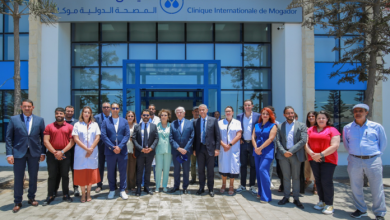NFL Shock: Jets Legend Nick Mangold Reveals He Needs a Kidney Transplant

In a startling development that has sent ripples through the NFL and the sports world, former New York Jets standout center Nick Mangold has publicly revealed that he is in urgent need of a kidney transplant. Having battled chronic kidney disease for nearly two decades, Mangold’s health situation has reached a point where dialysis is now part of his life—and the search for a donor has become a public plea.
This revelation not only underscores the health challenges that can follow elite athletes long after their careers end, but also highlights broader issues about organ donation, the human impact behind sports legacies, and how a community can rally when one of its own is down.
Who Is Nick Mangold? A Brief Retrospective
To fully grasp the weight of this news, it’s important to understand Mangold’s stature in NFL lore, particularly with the Jets.
- Early life and college: Mangold played college football at Ohio State, where he developed a reputation for toughness and consistency.
- NFL career: Drafted 29th overall by the Jets in 2006, Mangold spent his entire professional career in New York (through 2016).
- Achievements: Over his 11 seasons, he started nearly every game he played, earning seven Pro Bowl selections and multiple All-Pro honors.
- Legacy and recognition: In 2022, Mangold was inducted into the Jets’ Ring of Honor.
His career was built on consistency, resilience, and a blue-collar toughness that endeared him to both teammates and fans. In many ways, he represented the ideal of an NFL lineman: durable, reliable, and unflashy but essential.
Given that storied background, the news that he now faces a fight far beyond the gridiron is particularly poignant.
The Reveal: What Mangold Shared
The Diagnosis and Timeline
Mangold’s health struggles are not new; he was diagnosed with a genetic defect in 2006, which has progressively caused chronic kidney disease. Despite the seriousness of such a diagnosis, many may not have known the full gravity of his condition—until now.
On October 14, 2025, Mangold made public what had previously been kept private: his condition had worsened to the point that he was undergoing dialysis and needed a kidney transplant.
He admitted, with candor and emotion: “I always knew this day would come, but I thought I would have had more time.”
While the diagnosis goes back many years, the urgency is recent: over the summer, Mangold reportedly lost 35 pounds in two months, experienced fatigue, dizziness, and nausea, and saw his red blood cell count drop significantly—signs of advancing kidney failure.
In late August, he spent five days hospitalized, starting on dialysis before transitioning to an outpatient facility—now undergoing dialysis three times a week.
The Appeal and the Ask
One of the most heart-rending parts of his disclosure is that none of his family members are eligible to donate a kidney. Thus, he is turning outward—appealing to fans, former teammates, and the wider public for help.
Specifically, Mangold is seeking a living kidney donor with Type O blood—a restriction that narrows the pool of matches.
In his public letter to the Jets and Ohio State communities, he urged potential donors to visit the transplant site at Columbia Surgery and use his full name (Nicholas Mangold) and birthdate (January 13, 1984) when indicating their interest.
He thanked his family, calling them “my rock at every step,” and expressed his resolve to stay positive, focused, and hopeful for “better days” ahead.
The Stakes: Why This Matters
Health Implications
For Mangold, the stakes are deeply personal and medically urgent. Without a successful transplant, dialysis becomes a long-term necessity—but dialysis is not a cure, and it carries its own burdens: dietary restrictions, vascular access complications, and a significant toll on quality of life.
Medical literature shows that people with end-stage renal disease on dialysis have a notably reduced life expectancy compared to transplant recipients, as well as higher rates of cardiovascular disease, infections, and other complications. While some patients live many years on dialysis, the variability is wide and the risks are constant.
A transplant, especially from a living donor, offers far better outcomes: improved survival, better quality of life, and fewer long-term complications. However, transplant surgery carries its own risks, and the recipient must manage lifelong immunosuppression (to prevent rejection). The balance is delicate—and timing is often critical.
Human and Emotional Cost
For Mangold—and anyone in his position—the emotional burden is enormous. A man accustomed to controlling his physical destiny on the field now faces vulnerability in a public, life-threatening way. His children, wife, family, and former teammates are drawn into a struggle that extends far beyond touchdowns, sacks, or Pro Bowl selections.
The personal stakes are also communal. Mangold’s fame gives him a platform—he is not just a private patient, but a public figure asking for help. That amplifies both the hope and the pressure of his appeal.
A Broader Spotlight on Organ Donation
Mangold’s openness shines a light on organ donation issues: mismatch, donor scarcity, public awareness, and the ethics of living donor surgery. When a high-profile athlete speaks publicly, many people who might never have considered organ donation may pause and reflect. It can move hearts. It can spur registrations.
At the same time, the medical reality is unforgiving: the demand for donor organs far outpaces supply. Many people die each year waiting for a kidney transplant, because matching, logistics, and health eligibility constraints limit what can be done.
In this sense, Mangold becomes not just a patient, but a symbol: of what’s at stake, of how fragile health can be even for the seemingly invincible, and of a community’s capacity to respond.
The Response So Far
The reaction to Mangold’s announcement has been swift and emotionally charged.
- The Jets organization itself published his message on its official site, supporting his appeal.
- Media outlets across the sports world—ESPN, NFL.com, CBS Sports, Fox News, People, among others—have covered the story, amplifying his plea.
- Fans and former teammates have expressed prayers, support, and in some cases, interest in being screened as potential donors. Social media has lit up with messages of solidarity.
One of the key challenges will be screening and logistics. Not everyone with Type O blood is a match; further tests (e.g. tissue typing, crossmatch) are necessary. Only a subset of volunteers will ultimately qualify medically and immunologically to donate safely.
Reports also note that Mangold has paused or scaled back his coaching work (at Delbarton School) to accommodate his treatment schedule.
He says he is “better than I was in August” and trying to regain functioning strength again despite the taxing routine of thrice-weekly dialysis.
Context: Kidney Disease and Athletes
Mangold’s story is not entirely unique in having chronic disease in life after sports, but it’s rare for a condition of this severity and scale to remain largely private until its brink.
Chronic kidney disease (CKD) can result from many causes—hypertension, diabetes, autoimmune disease, genetic defects, and sometimes from repeated physical stress or medications over years. In his case, the root appears to be a genetic defect, diagnosed early, that slowly deteriorated kidney function over nearly two decades.
Some athletes do experience organ stress from long-term use of certain medications (NSAIDs, supplements), high-protein diets, or extreme physical stress, but there is no public indication that Mangold’s condition was attributable to his football career per se.
That said, the intersection between high-level sport and long-term health challenges is an area of growing research: how does the extraordinarily physical life of a professional athlete affect the body decades later? Mangold’s public health battle invites reflection on that question—though it would be speculative to directly connect his kidney disease to his football years without clinical evidence.
What Happens Next: The Road Forward
The Donor Search
- Screening: Potential donors will first be checked for blood type (he is seeking Type O) and general health. Then further tests like tissue typing, crossmatching, antibody screening, and donor workups will follow.
- Logistics: If a match is found, arrangements for surgery, hospitalization, and post-operative care must be coordinated. Donor safety is paramount; surgeons must ensure that donor risk is minimized (doing only what is medically safe and ethical).
- Timing: Transplant timing is critical. Delays reduce quality of life and may allow complications to accumulate. But rushing without a safe match is also dangerous.
- Immunosuppression: After a transplant, the recipient must take immunosuppressive drugs to prevent rejection. This carries risks of infection, cancer, and other side effects. Ongoing follow-up is essential.
Managing Dialysis and Health
While awaiting a transplant, Mangold must continue dialysis. He’ll also need to manage:
- Diet (restricting sodium, potassium, phosphorus, fluid intake)
- Blood pressure control
- Anemia (common in kidney failure)
- Cardiovascular risk (heart disease is a major risk in kidney patients)
- Monitoring complications (bone disease, electrolyte imbalance, infections)
His physical strength, nutrition, and energy levels will remain challenged. It’s a delicate balance of maintaining health while enduring treatment.
Psychological Resilience
A transplant journey is as much psychological as physiological. Mangold’s prior mindset—discipline, perseverance, focus—may help that journey. His public statements show a desire to fight, to remain positive, and to lean on support.
His family—wife Jennifer and their four children—will be deeply involved emotionally and logistically. Mangold’s ability to stay open, to communicate with his community, and to ask for help reflects a vulnerability that many public figures avoid.
The Role of Community
One of the most powerful aspects of this story is how it shifts from private to communal. Fans, former players, the NFL community, and medical professionals are all part of the unfolding narrative.
If a donor is found through public outreach, it becomes a story of collective hope, compassion, and solidarity. Even if Mangold’s own outcome remains uncertain, the attention may inspire more people to register as organ donors, potentially benefiting many others.
Reflections: Why This Story Resonates
From Ironman to Vulnerability
Nick Mangold was once the imposing, unyielding center anchoring the Jets’ line; a physical fortress on the field. His reveal shows that even the strongest figures can be vulnerable to forces far beyond strategy or muscle. It’s a humbling reminder of mortality—that health is not guaranteed to anyone.
The Power of Voice
Many people with serious illness are silent, private, or ashamed. Because of Mangold’s status, his transparency brings visibility to what is often hidden: the day-to-day slog of chronic illness, waiting, hope, and fear. In doing so, he gives voice to countless others struggling quietly.
Sports as Mirror
Sports are often about competition, glory, numbers, and spectacle. But at the heart lies humanity. This story brings us back to that heart—the fragility behind the helmets, the bodies behind the logos, and the lives beyond the highlight reels.
Legacy Beyond the Field
Mangold’s legacy was already solid. But this chapter gives him a new dimension: one of courage in adversity, humility in asking for help, and leadership in illness. His impact may now extend beyond football, into public health awareness and human connection.
Conclusion: Holding On, Reaching Out
Nick Mangold’s announcement that he needs a kidney transplant is not just a shocking development for Jets fans—it’s a deeply human moment. It is a reminder that fame and achievement do not make one immune to suffering; that health is precious and precarious; and that our capacity for compassion, for stepping up, can matter more than any stat line.
What happens next is uncertain. Will a match be found in time? Will surgery go smoothly? Will recovery restore him to health and strength? Those are questions only time, medicine, and fate can answer.
But already, in asking publicly, Mangold has done something powerful: he has turned his struggle into a call to action. He has said that he does not face this fight alone—that he needs help, and that the community can help. He has opened his journey to us, offering us the chance to decide whether we will respond.
Whether as fans, as individuals, or as part of a larger human network, we are now part of his story—praying, hoping, watching, maybe even acting.




